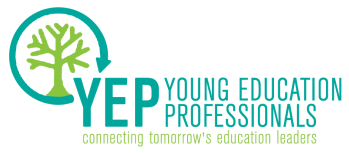
When I was a middle school teacher several years ago, there was one student whose mother I could never reach. By the second year I had Christopher in class, I had yet to meet or speak with his mother even once. I naively made assumptions about why we did not have a working phone number for her or why she never attended his IEP meetings, but in general, I had no need to reach her. Like most middle school students, Christopher got into the occasional squabble with his peers, but he rarely did anything that caused a problem in class. My biggest concern with Christopher was that, well, he didn’t do much at all. I knew that he struggled academically, and while I attempted to differentiate my assignments for him, he made little progress in sixth or seventh grade.
Having already assumed that I would not reach his mom, I called home one day – to do my due diligence – and was shocked that someone picked up. I couldn’t believe that after all this time, Christopher’s mom was actually on the phone. We chuckled when we realized he had given me his personal cell phone number to prevent any calls from reaching his mom but had let her borrow his phone for the day. Christopher’s mom was lovely, and she was deeply invested in making sure that her son did the best he could in school. My assumptions about her disengagement had been totally wrong – in fact, his mom worked double shifts as a city bus driver to support her family, which was the reason she was not able to attend daytime meetings at the school. We were both grateful to connect, and we began to communicate more regularly.
While Christopher was angry at first that I had called his mom, he slowly realized that I would also call her when he had a good day in class or to tell her how hard he was working. Over time, I saw a dramatic change in his demeanor and behavior simply as a result of the positive working relationship his mom and I had developed to support him. Christopher went from being one of my most disengaged students to one who did all of his work – even though he truly struggled – and who defended me if his classmates got out of hand. As for me, my eyes had been opened to the power of family engagement and the impact it can have on our students.
Too often, teachers do not have the funny moment I did, where contact that has been prevented by a student’s scheming is initiated because of a slip-up on their part. Too often, in teachers’ minds, that absent parent begins to represent everything wrong with the school, the community, and the child. Too often, a few negative interactions with students’ parents begins to color how teachers see family engagement overall.
My work now aims to help schools, districts, and community partners challenge their assumptions about families. By taking an asset-based approach to engagement, we do not ignore challenges or weaknesses but instead highlight strengths and positive attributes in the various ways families and the community support students. This approach focuses on what families bring to the table in support of their children’s education – no matter how large or small – and leverages those contributions towards making improvements in other areas. In doing so, everyone involved feels affirmed, safe, and appreciated – and they are consequently more likely to make efforts towards strong home-school relationships.
The great thing for busy educators is that an asset-based approach to engagement requires few, if any, resources and little extra work. Instead of only sending home negative notes or making concerned phone calls, teachers can add in some celebratory outreach. Schools can applaud improvement, even on a small scale, to show students and families that their efforts are recognized and appreciated. Most importantly, educators can reframe their assumptions and attitudes about families – like I had to do – to find the positives in each situation. This will not always be easy, but it is critical for building partnerships with families around the education of their children. Families like Christopher’s taught me that a little bit of positivity yields great results, and I strive to help schools see and practice that in their daily work.

 RSS Feed
RSS Feed